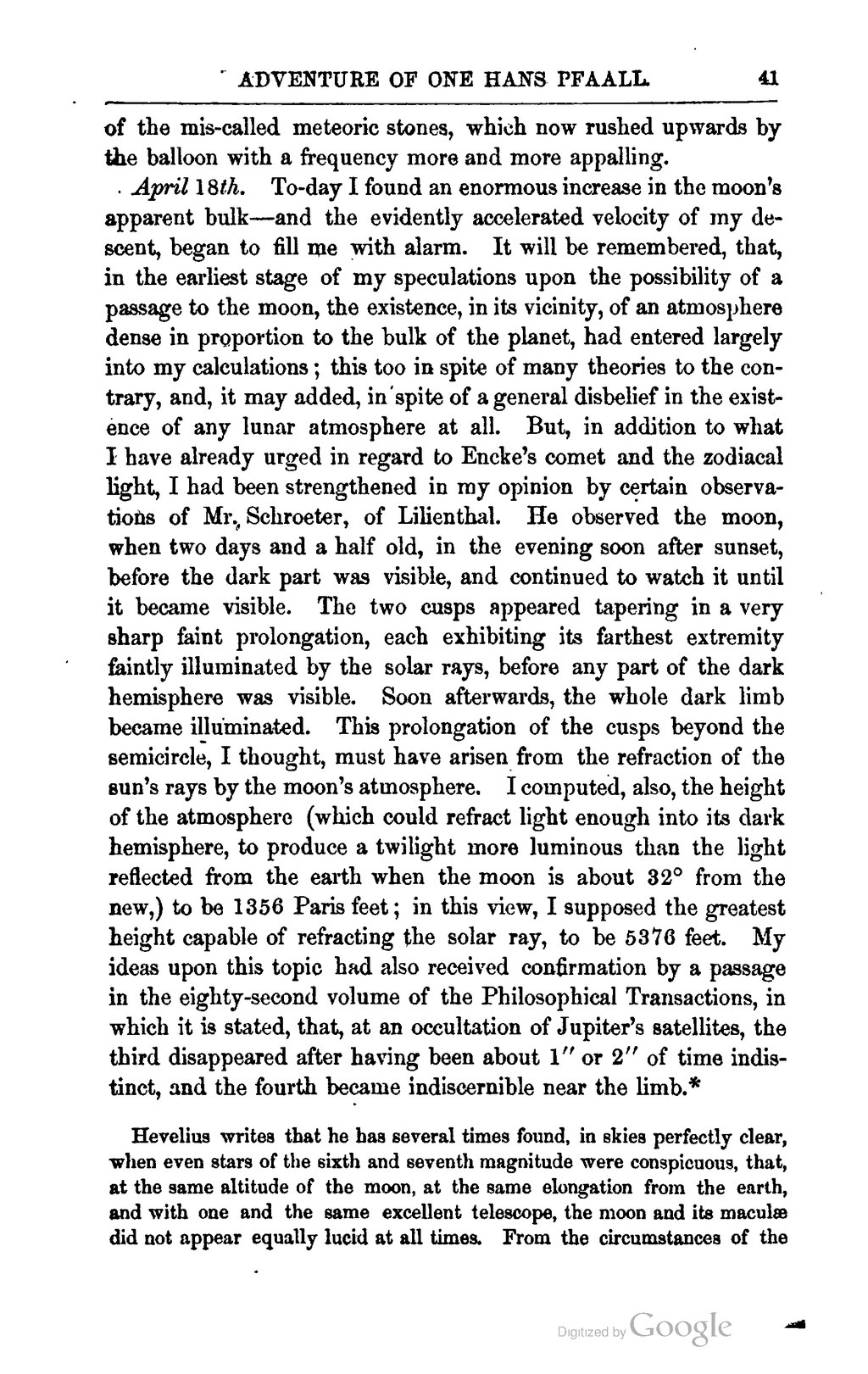of the mis-called meteoric stones, which now rushed upwards by the balloon with a frequency more and more appalling.
April 18th. To-day I found an enormous increase in the moon's apparent bulk—and the evidently accelerated velocity of my descent, began to fill me with alarm. It will be remembered, that, in the earliest stage of my speculations upon the possibility of a passage to the moon, the existence, in its vicinity, of an atmosphere dense in proportion to the bulk of the planet, had entered largely into my calculations; this too in spite of many theories to the contrary, and, it may added, in spite of a general disbelief in the existence of any lunar atmosphere at all. But, in addition to what I have already urged in regard to Encke's comet and the zodiacal light, I had been strengthened in my opinion by certain observations of Mr. Schroeter, of Lilienthal. He observed the moon, when two days and a half old, in the evening soon after sunset, before the dark part was visible, and continued to watch it until it became visible. The two cusps appeared tapering in a very sharp faint prolongation, each exhibiting its farthest extremity faintly illuminated by the solar rays, before any part of the dark hemisphere was visible. Soon afterwards, the whole dark limb became illuminated. This prolongation of the cusps beyond the semicircle, I thought, must have arisen from the refraction of the sun's rays by the moon's atmosphere. I computed, also, the height of the atmosphere (which could refract light enough into its dark hemisphere, to produce a twilight more luminous than the light reflected from the earth when the moon is about 32° from the new,) to be 1356 Paris feet; in this view, I supposed the greatest height capable of refracting the solar ray, to be 5376 feet. My ideas upon this topic had also received confirmation by a passage in the eighty-second volume of the Philosophical Transactions, in which it is stated, that, at an occultation of Jupiter's satellites, the third disappeared after having been about 1" or 2" of time indistinct, and the fourth became indiscernible near the limb. [1]
- ↑ Hevelius writes that he has several times found, in skies perfectly clear, when even stars of the sixth and seventh magnitude were conspicuous, that, at the same altitude of the moon, at the same elongation from the earth, and with one and the same excellent telescope, the moon and its maculæ did not appear equally lucid at all times. From the circumstances of the
